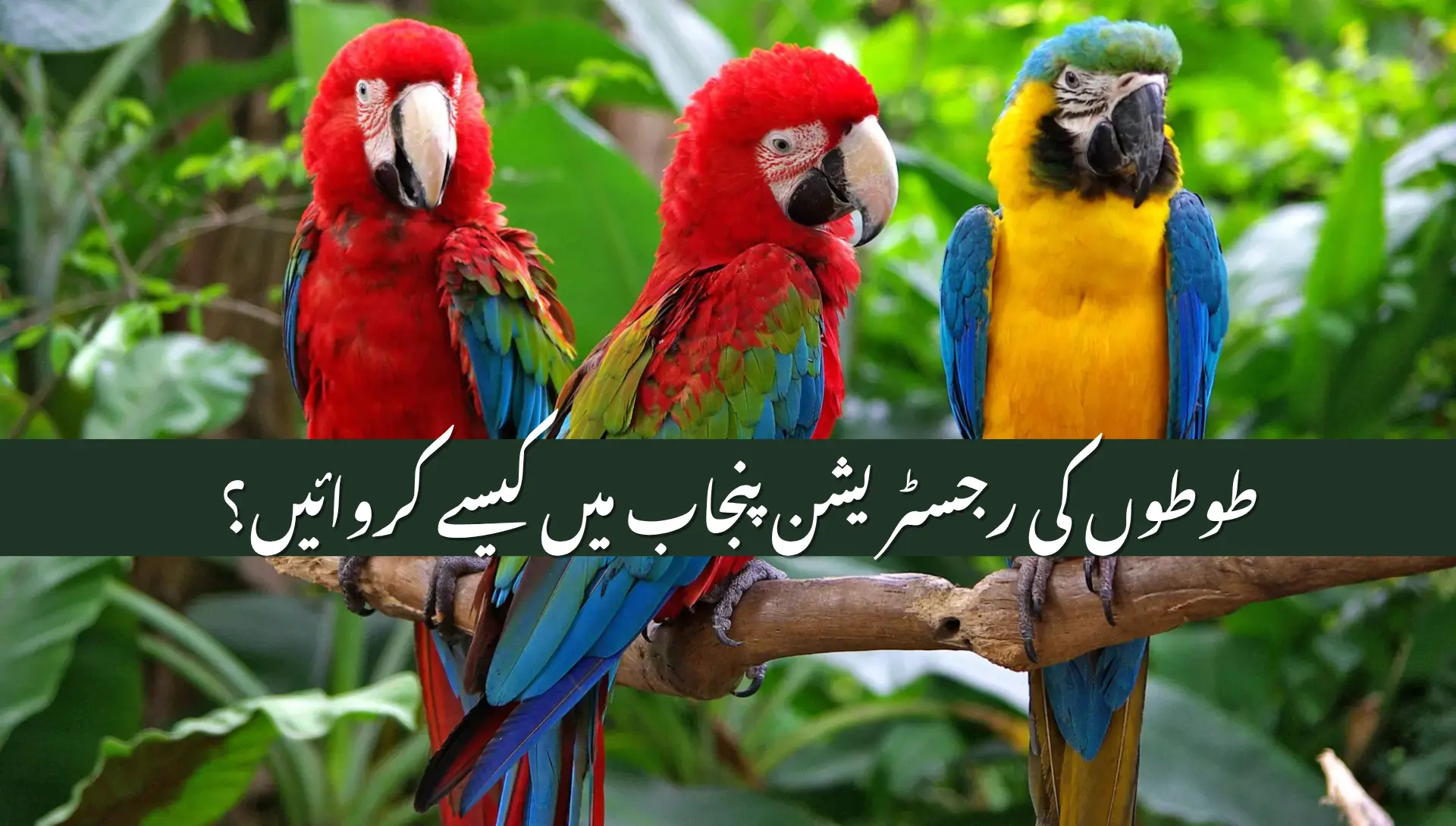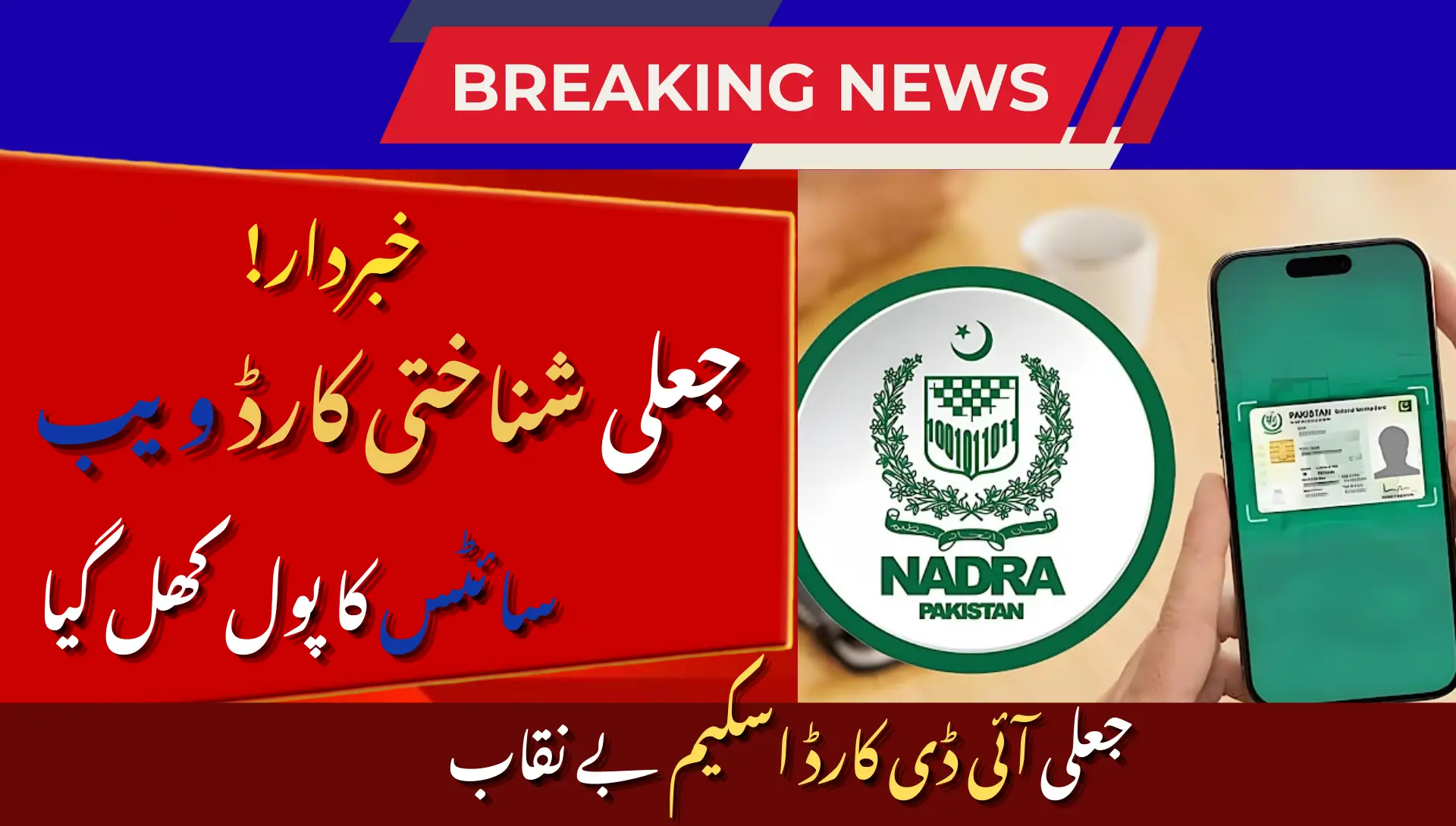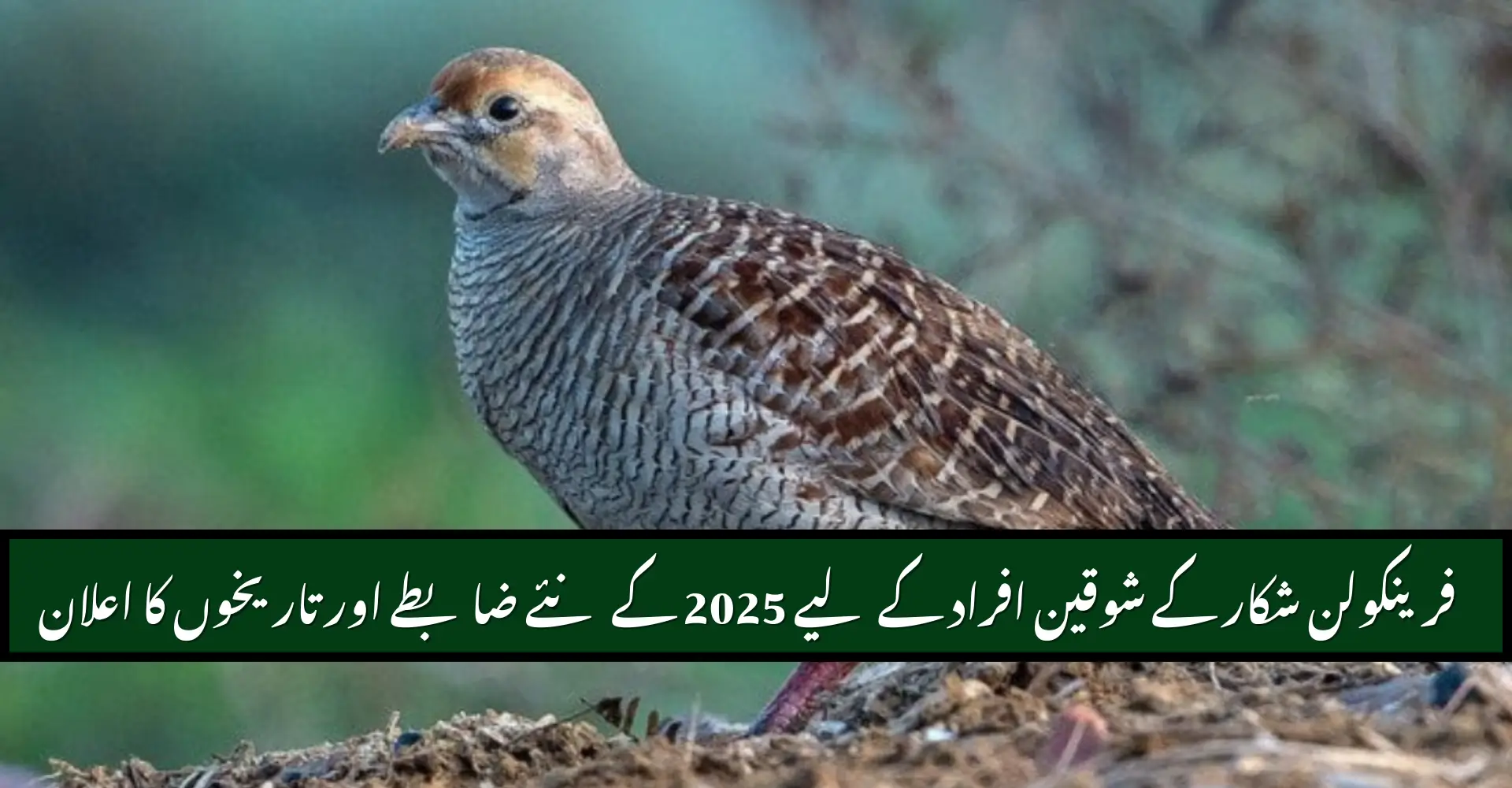Parrot Registration in Punjab 2025: How to Apply and Meet the Deadline. If you’re a bird owner in the province of Punjab Wildlife Department (PWD), then you must act now. The new parrot registration in Punjab 2025 rules mean you must register your pet parrot by the deadline, pay the fee, and tag it or face legal action. This article explains how to apply, which species are covered, and why the regulation matters.
Why the New Parrot Registration Rule?
The PWD has announced that all parrots including common pet species such as the Alexandrine Parakeet (Psittacula eupatria), Rose‑ringed Parakeet (Psittacula krameri), Grey‑headed Parakeet and Blossom‑headed Parakeet (Psittacula cyanocephala) must now be registered and ring-tagged.
The aim: curb illegal wildlife trade and protect declining native bird populations.
Legal basis: The Wildlife Act
The mandate is backed by the Punjab Wildlife (Protection, Preservation, Conservation and Management) Act, 1974 and its 2025 amendments, which empower authorities to license, regulate and penalise infractions.
What’s changing for owners?
| What used to happen | What must happen from 2025 | Why it matters |
|---|---|---|
| Some parrots kept as pets with little regulation | All parrots of listed species must be registered, tagged, fee paid | Ensures traceability and reduces illegal capture |
| Wild-bird trading often unmonitored | Only licensed breeders/dealers may trade; private owners must register too | Reduces black-market trade and ecological damage |
Which Species Are Covered?
The registration requirement applies to specific parrot and parakeet species listed by the department. These include:
- Alexandrine Parakeet (Psittacula eupatria)
- Rose-ringed Parakeet (Psittacula krameri)
- Grey-headed Parakeet (Psittacula finschii)
- Plum/Blossom-headed Parakeet (Psittacula cyanocephala)
Note: Exotic birds like African greys, macaws or cockatiels are not part of this registration scheme though they may fall under other regulations.
How to Apply for Parrot Registration
Here is the step-by-step process for registration of your parrot in Punjab:
Step 1: Gather documents
You’ll need:
- Proof of ownership or acquisition (invoice or receipt)
- Your CNIC/NIC-e copy
- Details of the bird: species, age, current ring-tag (if any)
- For breeders: details of breeding facility, number of birds
Step 2: Visit the official portal or app
You can apply via:
- The PWD’s online e-services portal.
- Alternatively via the Wildlife mobile app (if available).
Complete the online form, upload the documents.
Step 3: Pay the registration fee
For individual owners, the fee is Rs 1,000 per bird.
For breeders there are higher annual fees (see table below).
Step 4: Bird tagging & certificate
After submission and payment, the PWD will issue a unique identification ring for the parrot and certificate of registration. Without the ring you cannot legally keep or trade the bird.
Fee Structure Summary
| Owner type | Fee | Notes |
|---|---|---|
| Private individual (pet bird) | Rs 1,000 per bird | One-time registration fee |
| Small-scale breeder | Rs 30,000 per annum | Farm size 3 marla to 1 kanal |
| Large-scale breeder | Rs 50,000 per annum | Farm size above 1 kanal |
Step 5: Compliance and record-keeping
Keep your registration certificate, bird’s ring tag visible, and update the department in case of bird transfer or breeding. Non-compliance can lead to fines or confiscation.
Deadline & Penalties You Should Know
- The regulation is effective now and owners must register their parrots before the deadline. While some sources previously mentioned a December 5 2025 deadline, the key point is: registration is compulsory now.
- After deadline: possessing unregistered parrots means you risk prosecution under the Wildlife Act.
- Offenders may face bird confiscation, licence revocation, or monetary penalties.
- Trading of wild-caught birds is strictly banned; only licensed dealers may legally trade.
Why Responsible Pet-Bird Ownership Matters
Biodiversity & Ecosystem Impact
Native parakeet species serve important ecological roles seed dispersal, controlling pests, and contributing to a balanced habitat. With illegal trade depleting wild populations, regulation becomes key.
Legal Protection & Social Responsibility
By registering, you:
- Legitimise your ownership
- Help the government track and curb illegal bird-trade networks
- Protect yourself from penalty risks
Best Practices for Birds in Captivity
- Ensure proper cage size, nutrition, veterinary check-ups
- Avoid wild-caught birds unless legal and certified
- Maintain records of breeding and transfers
FAQs
Q1: Can I register more than one parrot at once?
Yes — each bird must be registered individually and pay the fee separately.
Q2: What if I have an exotic parrot (e.g., African grey)?
Exotic species are not currently part of this specific registration scheme, but may fall under other wildlife licensing rules.
Q3: I bought a parakeet recently. Do I still need to register it?
Yes — any parrot covered by the rule must be registered even if recently acquired. Offspring of registered birds must also be registered.
Q4: What happens if I don’t register by the deadline?
You risk penalties, confiscation of birds, and legal action under the Wildlife Act.
Q5: Does registration mean I can freely trade the parrot?
No. Owning and registering a parrot is different from trading. For trade or commercial breeding you need the appropriate licence. Only registered dealers/breeders may operate.
Conclusion
In summary: parrot registration in Punjab 2025 is now mandatory under the Punjab Wildlife Department’s new rules. Whether you own a single bird or run a small breeding facility, you must comply register, tag, pay the fee and keep records. By doing so you ensure legal ownership, contribute to conservation, and avoid penalties.














